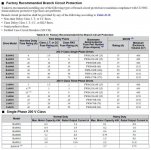An RPC is simple, but the initial cost is higher if just for a single machine and you are not making your own, i.e. purchasing something like a 5 Hp RPC. With a VFD, you would most likely use it at a fixed frequency (like 60Hz) and use the mechanical Vari-Speed head to adjust the speed. This will give the mechanical advantage of the pulley ratio w/o the loss of Hp when a motor is used below it's base frequency (60Hz for US motors), you will also get more even wear on the Vari-Speed mechanism. You would use the VFD low voltage inputs for forward/reverse, the motor is directly wired to the VFD. Replace the current rotary drum switch, as the contacts will not conduct low voltage signals well. There are inexpensive three way switches for FORWARD/STOP/REVERSE. You can also program some VFDs to not run with power up should you leave switch in a run position and/or power outage.
If just the mill, than a VFD would probably be the most economical and simplest way to go. There are inexpensive VFDs, but I would not purchase any of the cheap generic ones off of eBay. A mill is very easy to wire up to a VFD, you may want a braking resistor if you want the spindle to stop quickly (like under 5 seconds). If you where to completely replace the Vari-Speed mechanical system with a direct drive belt system, you are looking are considerable more cost, as you also need a larger Hp motor to handle the speed range.
Most recommended VFD for Bridgeport Mills | Wolf Automation
Servo Variable Frequency Drive


